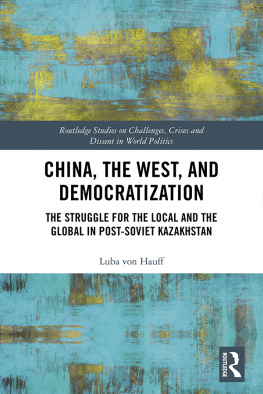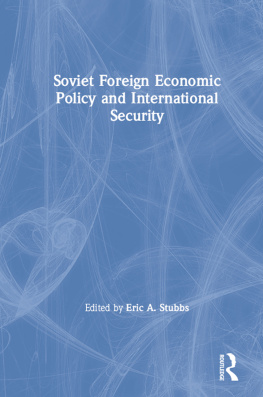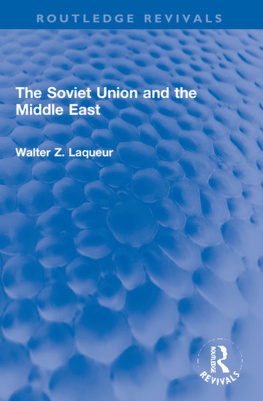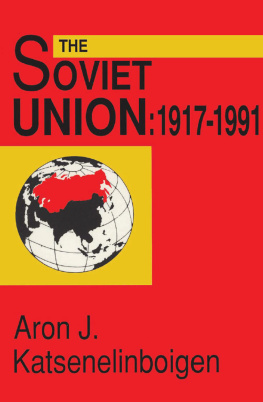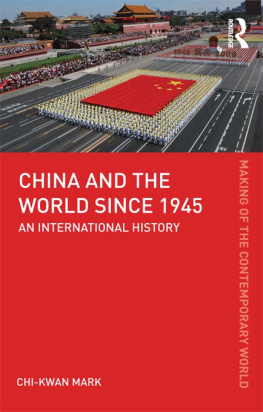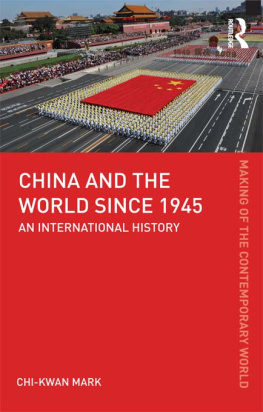Li Hua-Yu - China Learns from the Soviet Union, 1949-present
Here you can read online Li Hua-Yu - China Learns from the Soviet Union, 1949-present full text of the book (entire story) in english for free. Download pdf and epub, get meaning, cover and reviews about this ebook. City: Lanham;Md, year: 2011;2010, publisher: Lexington Books, genre: Politics. Description of the work, (preface) as well as reviews are available. Best literature library LitArk.com created for fans of good reading and offers a wide selection of genres:
Romance novel
Science fiction
Adventure
Detective
Science
History
Home and family
Prose
Art
Politics
Computer
Non-fiction
Religion
Business
Children
Humor
Choose a favorite category and find really read worthwhile books. Enjoy immersion in the world of imagination, feel the emotions of the characters or learn something new for yourself, make an fascinating discovery.

- Book:China Learns from the Soviet Union, 1949-present
- Author:
- Publisher:Lexington Books
- Genre:
- Year:2011;2010
- City:Lanham;Md
- Rating:4 / 5
- Favourites:Add to favourites
- Your mark:
- 80
- 1
- 2
- 3
- 4
- 5
China Learns from the Soviet Union, 1949-present: summary, description and annotation
We offer to read an annotation, description, summary or preface (depends on what the author of the book "China Learns from the Soviet Union, 1949-present" wrote himself). If you haven't found the necessary information about the book — write in the comments, we will try to find it.
Li Hua-Yu: author's other books
Who wrote China Learns from the Soviet Union, 1949-present? Find out the surname, the name of the author of the book and a list of all author's works by series.
China Learns from the Soviet Union, 1949-present — read online for free the complete book (whole text) full work
Below is the text of the book, divided by pages. System saving the place of the last page read, allows you to conveniently read the book "China Learns from the Soviet Union, 1949-present" online for free, without having to search again every time where you left off. Put a bookmark, and you can go to the page where you finished reading at any time.
Font size:
Interval:
Bookmark:

T HIS BOOK IS THE RESULT OF AN international conference on The Soviet Impact on China: Politics, Economy, Society, and Culture, 19491991, held at Columbia University in June 2007 and organized by the two co-editors.
In the course of editing the chapters, we changed the title to China Learns from the Soviet Union, 1949Present in order to highlight Chinas active role in the evolution of the relationship between the two countries and in the process of adopting and adapting Soviet models of socialist construction and governance. As is well known, China chose to emulate the Soviet Union most closely in the first half of the 1950s, followed by increasing rejection of Nikita Khrushchevs efforts to reform Stalinism, but also by Maoist critiques of Stalins rule. As the Sino-Soviet conflict deepened, the Soviet Union became fanmian jiaocai , a case of negative teaching material. In the 1980s, as Mikhail Gorbachevs reforms gathered steam, Chinese interest in what was transpiring in the Soviet Union revived. However, after the end of Communist rule and the disintegration of the Soviet Union, China turned harshly against the Gorbachev reforms, especially against his pursuit of political liberalization. This stance has continued to this day. China thus once again regards the Soviet Union as a teacher by negative example.
We would like to express our sincere gratitude to the funding provided by the Harriman Institute for Russian, Eurasian, and Eastern European Studies and the Weatherhead East Asian Institute, both at Columbia.
We are grateful to the anonymous reviewer for making very helpful and detailed comments on the manuscript. And we would like to express our appreciation to our contributors for bearing with us during the editing process.Some of the authors were not accustomed to writing western-style academic papers but they responded readily to our requests for changes.
And last but not least, we would like to thank Mark Kramer, the director of Cold War Studies at Harvard University and the editor of the Journal of Cold War Studies, as well as Sylvana Kolaczkowska, the journals managing editor, for their continued support and encouragement. And we also thank the editors at Rowman Littlefield, and Lexington BooksJulie E. Kirsch, Paula Smith-Vanderslice, and Melissa McNitt.
Sino-Soviet Relations during the Mao
Years, 19491969
Lorenz M. Lthi

I N THE TWO DECADES FROM 1949 TO 1969 , Sino-Soviet relations followed a circular path. Apart from official diplomatic relations with the Nationalist government of China, Soviet contacts with Chinese leaders of any color were relatively rare before 1949. The unexpected 1941 Soviet non-aggression treaty with Japan left China without an effective deterrence against Japanese aggression. Immediately after the end of World War II, it was national interests, not revolutionary aims or ideological affinity that drove Stalins policy toward China. Following difficult negotiations in the summer of 1945, the Soviet Union formally allied with the Nationalists who headed the internationally recognized government and had traded economic concessions in Manchuria and Xinjiang for political support from the Soviet Union.1 Stalin looked down on what he called Chinas margarine communists. It was only in 1949, just before its victory in the civil war that his interests in Chinese Communism reawakened. After the alliance of February 14, 1950, Moscows relations with the new regime in Beijing developed rapidly, reaching their apex in the mid-1950s. Once disagreements developed, the alliance underwent a slow but steady decline. By 1966, only low-level governmental contacts remained of what once was a rich and multifaceted set of political, economic, party, and military relations. Three years later, both sides engaged in a brief military conflict over disputed, but otherwise insignificant, islands and grasslands. In contrast to the mid-1940s, Chinas Communists now looked down on the Soviet traitors against world revolution.
The Sino-Soviet relationship rose on the basis of their shared ideology, yet fell as a result of interpretative disagreements about it. Both sides were dedicated to communism, or what they believed communism represented. Both saw the world in terms of a struggle between good and evil, between a shining communist future and a sinister capitalist past, between peace and aggression, and between Marxism and imperialism. As disagreements emerged over the course of the 1950s and early 1960s, it became clear that each had different ideas about how to achieve the good, the shining future, peace, and Marxism, and how to deal with evil, capitalism, aggression, and imperialism. These disagreements were rooted in the theoretical deficiencies of Marxism itself, the inadequate understanding of this ideology, or its misuse for domestic purposes and even for personal gain. Below, we will briefly sketch Sino-Soviet relations from 1949 to 1969 before focusing on the sources of cohesion and conflict of this partnership.
Chronology, 19491969
In early 1949, after two decades of neglect, Stalin decided to re-establish good relations with the Chinese Communists, who were poised to win the civil war, by sending Anastas Mikoyan to China.2 Although the Comintern had initiated the foundation of the Chinese Communist Party (CCP) in 1921, relations after 1927 had been negligible. For some years before Mikoyans arrival in China, the CCP leaders themselves had worked for rapprochement. The ideological movement toward Stalins positions in the emerging Cold War aimed at securing economic, military, technological, and political assistance for the period after the expected establishment of the Peoples Republic, which occurred on October 1, 1949. 3 By early December that year, Mao Zedong was on his way to Moscow to lobby Stalin for a general agreement on the cooperation between the two largest socialist states. On February 14, 1950, after two months of maneuvering and negotiating, the two sides signed the Alliance and Friendship Treaty, which provided China with Soviet military support against outside aggression. Several agreements on economic aid financing followed in early spring, forming the basis of what would eventually become the largest ever socialist development project. In return, the PRC had to grant economic and military concessions in Xinjiang and Manchuria to the Soviet Union, accept unfavorable terms of trade, and consent to loan conditions in hard currency.4
The following three years witnessed both the Stalinization of the PRC, and friction over the Korean War. While Soviet aid was less significant than expected during the Korean War from mid-1950 to mid-1953,5 Chinas political system and official ideology was effectively Stalinized.6 At that time, the Soviet Union was particularly engaged in the modernization of the Peoples Liberation Army (PLA),7 while the chaotic state of Chinas economy in theimmediate post-civil war period and during the Korean War did not yet allow for massive Soviet economic aid.8
The years 1953 56 were the golden period of the alliance. In need to shore up support in the socialist camp for his leadership, Khrushchev reversed some of Stalins policies toward China, and corrected unfavorable terms of trade. At the same time, the PRC tried to break out from its international isolation by establishing relations with India in 1954 and attending the Bandung Conference of the Afro-Asian Movement the following year. Chinas major diplomatic breakthrough, however, was its momentous role at the 1954 Geneva Conference on Indochina and Korea, where its foreign minister Zhou Enlai contributed much to the success of the negotiations. Yet, the mid-1950s also witnessed the first Chinese dissatisfactions with the status quo in international and inter-socialist affairs. The first Taiwan Strait Crisis in 1954 55the shelling by the PRC of a small Nationalist-held island, Jinmen, in Xiamen Baycame as a surprise to the world, in general, and to the Soviet Union, in particular. Khrushchevs refusal to unfold the nuclear umbrella over the island to deter American countermoves revealed the limits of the alliance to Mao Zedong. Moscow did, however, help Beijing to develop its own nuclear capabilities in the aftermath of the crisis. Moreover, disagreements over economic development emerged in the mid-1950s, even if Soviet economic assistance reached its peak in these years.
Font size:
Interval:
Bookmark:
Similar books «China Learns from the Soviet Union, 1949-present»
Look at similar books to China Learns from the Soviet Union, 1949-present. We have selected literature similar in name and meaning in the hope of providing readers with more options to find new, interesting, not yet read works.
Discussion, reviews of the book China Learns from the Soviet Union, 1949-present and just readers' own opinions. Leave your comments, write what you think about the work, its meaning or the main characters. Specify what exactly you liked and what you didn't like, and why you think so.

